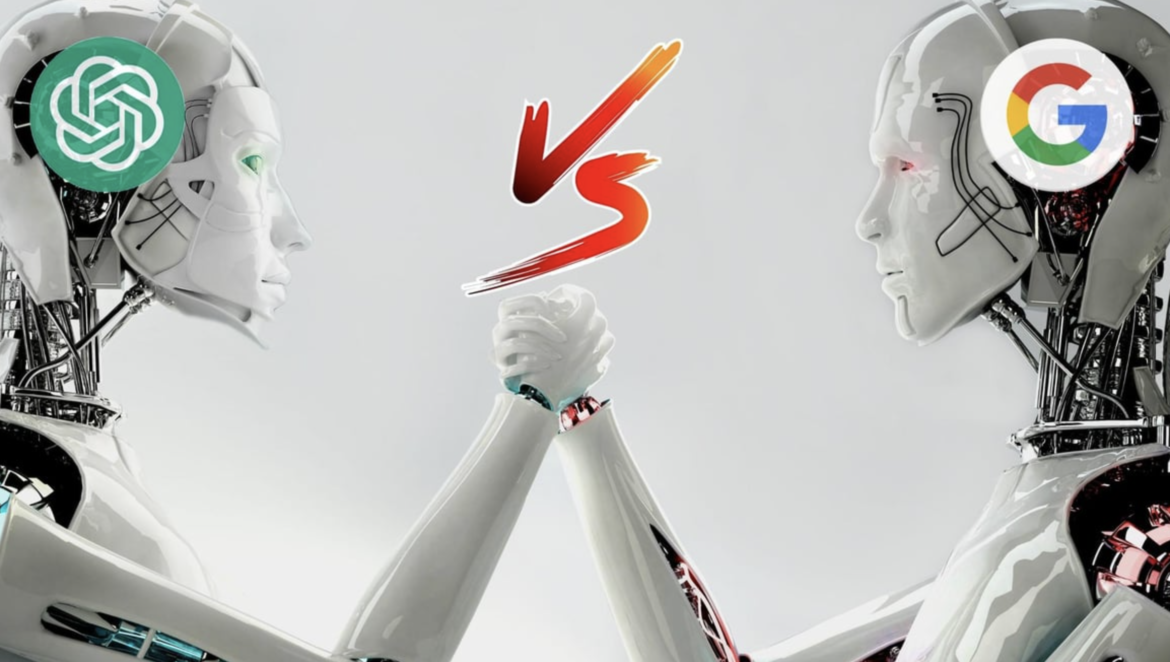In the ever-evolving landscape of artificial intelligence, Google continues to spearhead groundbreaking advancements. Their latest marvel, Bard AI, stands as a testament to their relentless pursuit of innovation, setting new standards for AI capabilities. Designed to revolutionize how we interact with technology, Bard AI redefines our expectations, pushing the boundaries of what we once thought possible.
Artificial intelligence has been heralded as the fourth industrial revolution, and Bard AI is the conductor leading this symphony of change. This AI is not just a product; it’s a partner, a collaborator, an assistant, and above all, a game-changer. It amalgamates Google’s years of data expertise and cutting-edge technology, creating a harmonious blend of unprecedented intelligence and intuitive understanding.
Bard AI is Google’s ultimate offering, designed to adapt and learn from interactions, making it more than just a tool—it’s an extension of the user. Its capabilities are as vast as they are impressive, from managing mundane tasks to assisting in complex decision-making processes, Bard AI is truly transformative.
As we journey through this article, we’ll delve into the intricacies of Bard AI, exploring its features, capabilities, and the extraordinary potential it holds. We’ll examine how Google’s latest AI innovation is not merely redefining the digital landscape but is shaping the future of human-computer interaction. Welcome to the era of Bard AI, where the line between science and fiction blurs, and the unimaginable becomes reality.
What is a Bard AI?
Bard AI is Google’s advanced artificial intelligence chatbot, designed as a competitor to OpenAI’s ChatGPT. Launched in March and recently made available in over 180 countries, Bard boasts a suite of impressive features that differentiate it from its competitors. Unlike ChatGPT, Bard has direct access to the internet, allowing it to provide real-time information and news. It also offers increased accessibility via integration with Google’s suite of apps and services, including Gmail, used by over 2 billion people worldwide.

Bard’s unique features include providing images as responses, accepting image and voice prompts, and offering an array of plugins from companies like Walmart and Spotify. It also supports over 20 programming languages, positioning it as a tool for professional coding assistance. Users can directly export Bard’s responses to Google Docs and Gmail, and it provides the option to validate information via Google Search.
Despite being in the experimental phase, Google Bard represents a significant advancement in AI chatbot technology. Its diverse capabilities could potentially redefine interactions in various areas, from casual conversation and professional correspondence to programming assistance.
What are the Main Bard AI Features?
Here is a summary of the main Bard AI features:
| Feature | Description |
|---|---|
| Internet Access | Bard has direct access to the internet, allowing it to provide real-time information and news. |
| Integration with Google Services | Bard integrates with Google apps and services, increasing accessibility on smartphones and other devices. |
| Images as Responses | Bard can provide images in its text responses, unlike ChatGPT. |
| Plugins | Bard features plugins from companies like Walmart, Spotify, and Uber Eats, among others. |
| Image and Voice Prompts | Users can input image and voice prompts, a step forward in enhancing AI chatbot interaction. |
| Export to Gmail and Docs | Bard allows users to directly export responses to Google Docs and Gmail drafts, streamlining information sharing. |
| Enhanced Search | Users can validate Bard’s information with Google Search, offering greater control over the information they seek. |
| Integration with Gmail | Bard’s integration with Gmail redefines email interactions for over 2 billion users. |
| Coding Support | Bard supports over 20 programming languages, helping professionals with code generation, explanation, and debugging. |
Google Bard AI is an advanced chatbot. Its plugins support image or voice prompts. Export options for Gmail and Docs make it a highly useful tool for various applications. Bard’s enhanced search and coding support capabilities further enhance its potential for professional use and information validation. Overall, Google Bard AI represents a significant step forward in AI chatbot technology.
How Could it Dominate the AI Market?
Bard AI, developed by Google, is demonstrating some significant features that might give it an edge over OpenAI’s ChatGPT, potentially leading to a shift in user preference.
Bard AI’s integration with various Google services significantly enhances its usability. For instance, being able to draft an email directly in Gmail using Bard AI can streamline the process of professional correspondence, making it a more attractive option for business users.
Now, let’s imagine a scenario: A business professional, Alice, uses ChatGPT for drafting emails, scheduling meetings, and getting quick answers to her queries. She finds the service useful but often wishes it could provide real-time data and be more integrated with her Google Workspace. When Bard AI becomes available, Alice decides to give it a try. She’s immediately impressed by its ability to fetch real-time news and the ease with which it integrates with her Gmail account.
In her first week of using Bard AI, Alice finds that drafting emails has become faster and more efficient, she can get live updates on market trends, and scheduling meetings is more streamlined within her Google Calendar. Impressed with the seamless experience, Alice makes the complete switch to Bard AI and encourages her colleagues to do the same. Over time, as more users experience the added benefits of Bard AI, it could potentially take over the user base of ChatGPT.
How to Use Bard and Future Features
Google’s Bard AI chatbot is accessible through the website bard.google.com. To start using it, users need to click on the ‘Try Bard’ option and agree to the company’s privacy policy. Google has, however, cautioned that Bard is currently in an experimental phase and may sometimes give inaccurate or inappropriate responses. Users are encouraged to leave feedback to help improve Bard.
Presently, Bard supports US English, Japanese, and Korean, but there are plans to expand its language support to 40 other languages soon.
In terms of future features, Google plans to make Bard more ‘visual’ in its responses, meaning it may include images in its responses in addition to text. This is achieved by combining Bard with Google Lens, allowing users to include images in their prompts.
Bard will also be integrated with various Google apps such as Docs, Drive, Gmail, and Maps, enhancing its versatility and utility. Further, Bard will work with Adobe Firefly to generate images, thereby enhancing its creative capabilities.
Moreover, Bard will be able to tap into various services from across the web using extensions from outside partners, leading to unprecedented possibilities. One such integration will be with Adobe’s family of creative generative AI models, Adobe Firefly, allowing users to quickly turn their creative ideas into high-quality images.
Imagine the Future of Bard AI
What features could be on the card for Bard AI in the next couple of years?
Let’s dream:
- Emotion Recognition: In the future, Bard could potentially have emotion recognition capabilities, understanding not just the words typed by the user, but also the emotional context behind them. This could allow it to respond in a more empathetic and contextually appropriate manner, enhancing the quality of interaction.
- Seamless Integration with IoT Devices: Bard could be integrated with various Internet of Things (IoT) devices, such as smart home appliances, wearables, and vehicles. This would enable users to control these devices using Bard, adding an extra layer of convenience.
- Personalized Learning Capabilities: Bard might develop the ability to learn and adapt to individual users’ communication styles and preferences over time, making each interaction more personalized and efficient.
- Video Generation and Analysis: Beyond just text and image responses, Bard could evolve to generate and analyze videos, providing more interactive and engaging content. It could also potentially interpret and understand video content provided by the user.
- Advanced Multilingual Support: Although Bard is expected to support many languages, it could further improve to understand and translate colloquial phrases, idioms, and regional dialects, making it more accessible to a diverse user base.
- Real-time Fact-Checking: Leveraging Google’s extensive database and search capabilities, Bard could offer real-time fact-checking services, providing users with immediate verification for dubious claims or information.
- Healthcare Advice: With user permission, Bard could integrate with health apps and devices, offering personalized health advice, reminders for medication, and even early warning for potential health issues based on data analysis.
- Advanced Augmented Reality (AR) Integration: Bard could be integrated with AR technology to provide users with immersive and interactive experiences, such as virtual tours, educational experiences, or even assistance with tasks like cooking or DIY projects.
Remember, these are speculative features and there’s no guarantee that Bard will develop in this way. However, given the rapid advancement of AI technology, such features are within the realm of possibility.
